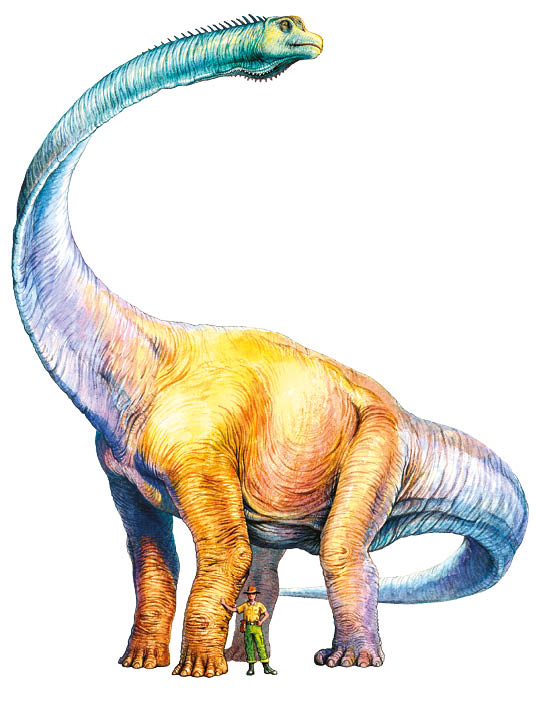Ben Torrent - Dinosaurs: Fascinating Facts and 101 Amazing Pictures About These Prehistoric Animals
Here you can read online Ben Torrent - Dinosaurs: Fascinating Facts and 101 Amazing Pictures About These Prehistoric Animals full text of the book (entire story) in english for free. Download pdf and epub, get meaning, cover and reviews about this ebook. year: 2013, publisher: Tom eMusic, genre: Religion. Description of the work, (preface) as well as reviews are available. Best literature library LitArk.com created for fans of good reading and offers a wide selection of genres:
Romance novel
Science fiction
Adventure
Detective
Science
History
Home and family
Prose
Art
Politics
Computer
Non-fiction
Religion
Business
Children
Humor
Choose a favorite category and find really read worthwhile books. Enjoy immersion in the world of imagination, feel the emotions of the characters or learn something new for yourself, make an fascinating discovery.

- Book:Dinosaurs: Fascinating Facts and 101 Amazing Pictures About These Prehistoric Animals
- Author:
- Publisher:Tom eMusic
- Genre:
- Year:2013
- Rating:4 / 5
- Favourites:Add to favourites
- Your mark:
Dinosaurs: Fascinating Facts and 101 Amazing Pictures About These Prehistoric Animals: summary, description and annotation
We offer to read an annotation, description, summary or preface (depends on what the author of the book "Dinosaurs: Fascinating Facts and 101 Amazing Pictures About These Prehistoric Animals" wrote himself). If you haven't found the necessary information about the book — write in the comments, we will try to find it.
This valuable and beautiful book is the work of two animal loversJames F. Coleman is a zoologist and the author of many books on prehistoric animals; Arthur Lobus is an illustrator of many popular encyclopaedias and books about the animal kingdom. His realistic and very graphic illustrations not only skilfully bring dinosaurs to life but lend an incredible atmosphere to the times in which these prehistoric animals lived.
This encyclopaedia is intended for children from age 7 to 10, but has been designed to equally fascinate adults. It is the essential compendium of knowledge about dinosaurs. First of all, it introduces the reader to Prehistoric times by answering various questions, such as what happened on Earth before the time of dinosaurs, how palaeontologists study these extraordinary animals and their time period, or what is the history of dinosaur discoveries. Next, the book describes the life of reptiles. Starting with the role of eggs in the reptilian reproduction cycle, the book goes on to describe the wide diversity of the Reptilian Family; non-dinosaur species that also lived on Earth in the very same era are similarly highlighted. Finally, the book addresses the dinosaurs themselves. First in line are the herbivorous dinosaurs, such as giant Stegosaurs, armoured Ceratops, dome-headed and duck-billed Iguanodons, and bird-footed dinosaurs. These are closely followed by the mighty carnivorous dinosaursTyrannosaurs, Spinosaurs, Dromaeosaurids, Oviraptors and early birds. The final part of the book displays three practical study tools: a Q&A section, a glossary of noteworthy words and a special photo gallery of dinosaurs.
The latest discoveries of modern palaeontology have been carefully featured in this book. These include how dinosaurs must have looked like, how they moved and what their habits were.
A great advantage of this new volume is its modern and user-friendly presentation which showcases over 190 illustrations, diagrams, questions and answers area and photo galerry!
Ben Torrent: author's other books
Who wrote Dinosaurs: Fascinating Facts and 101 Amazing Pictures About These Prehistoric Animals? Find out the surname, the name of the author of the book and a list of all author's works by series.

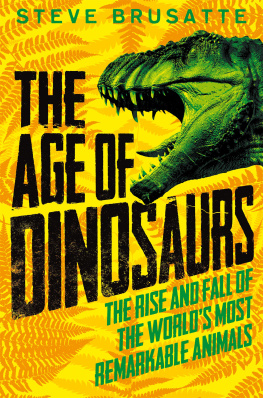
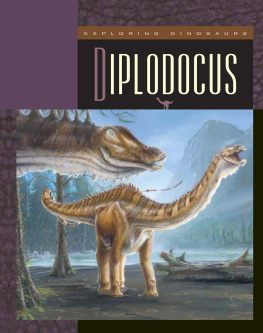
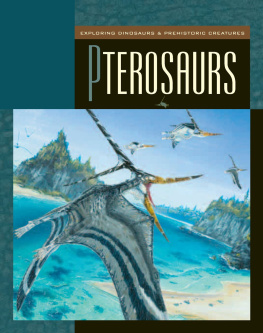
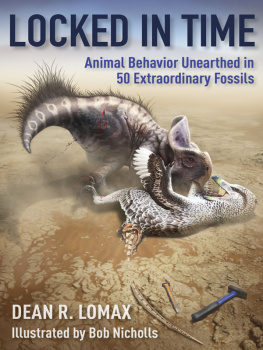
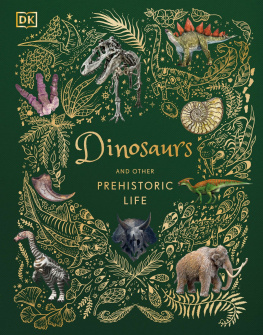
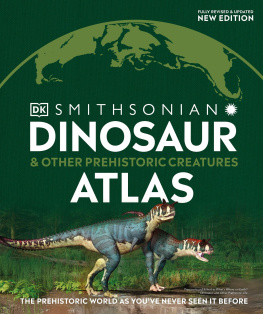
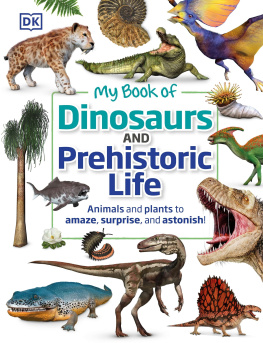
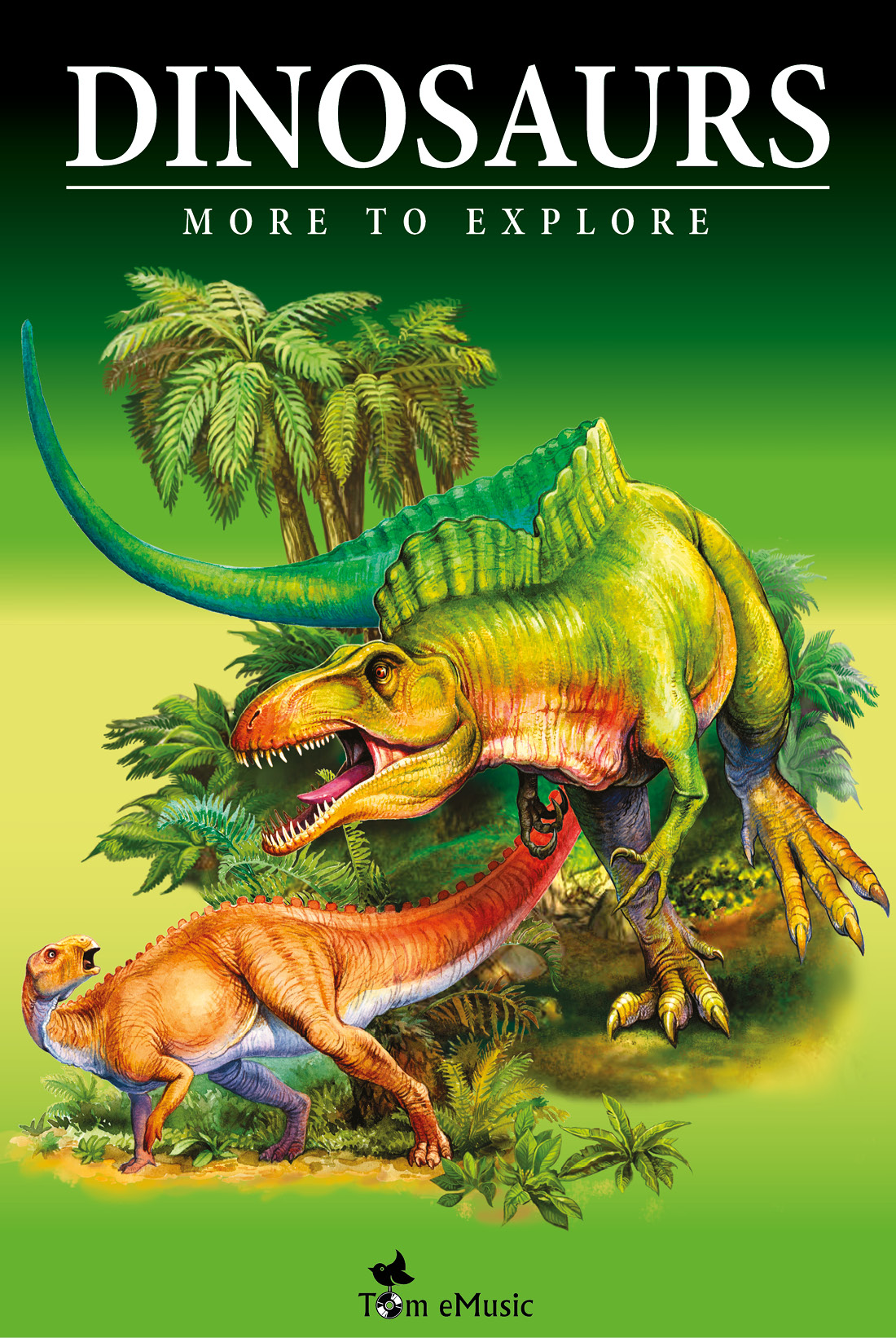
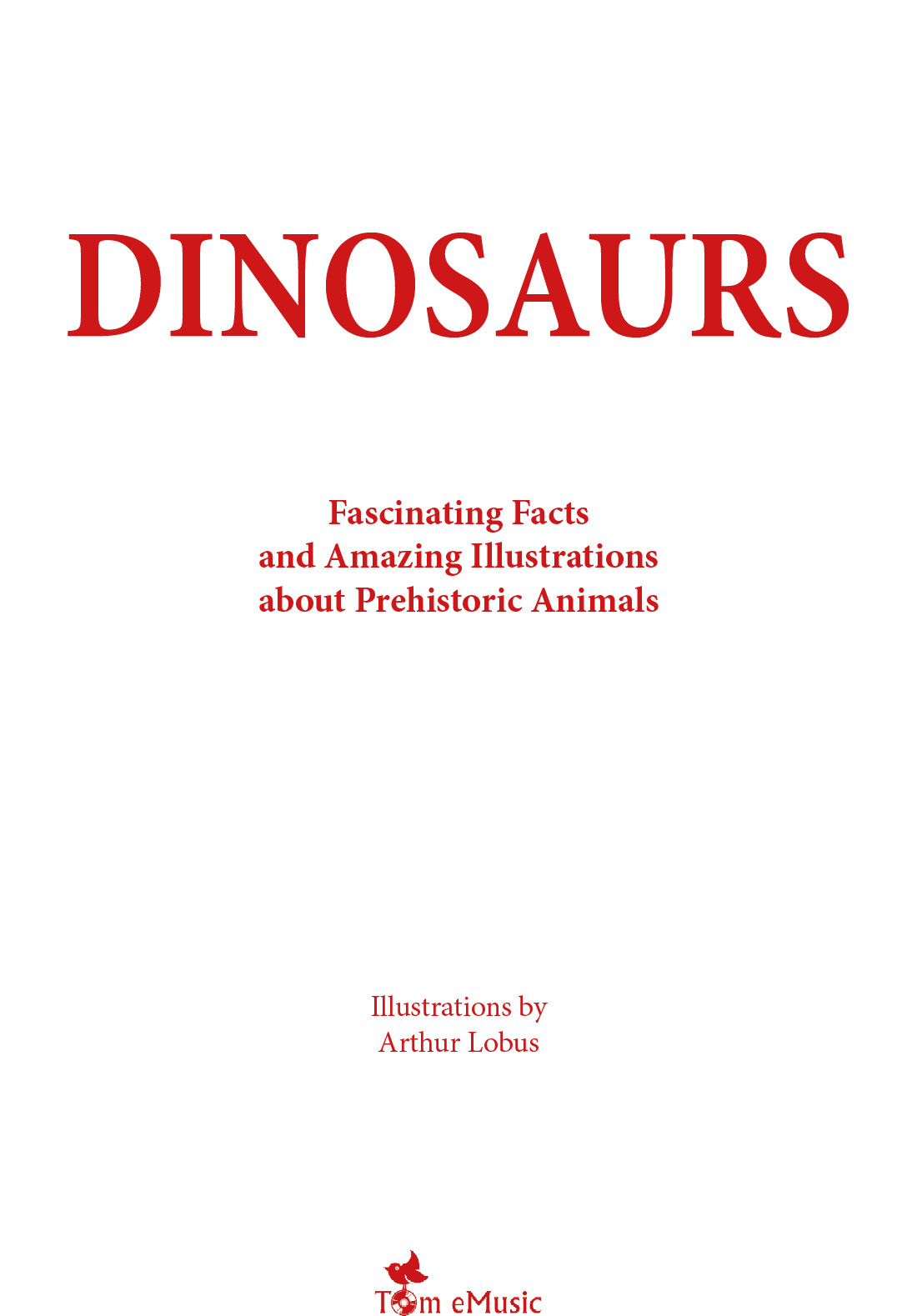
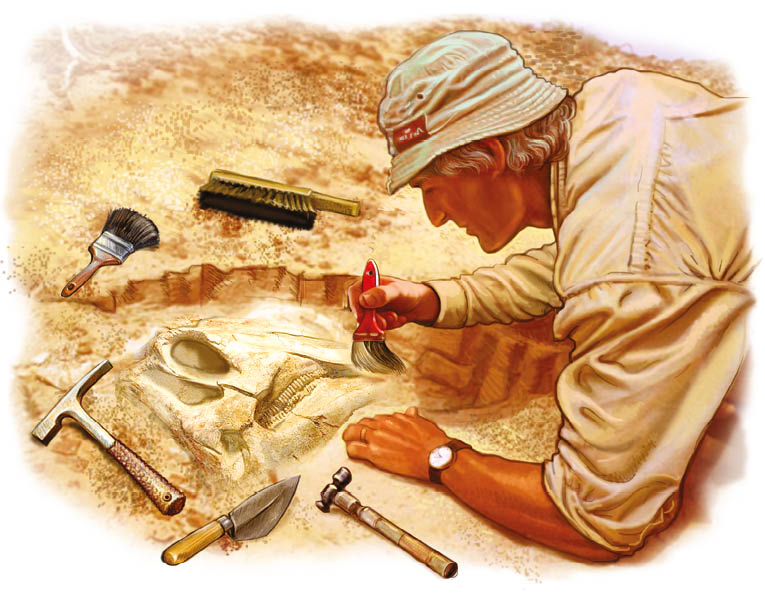
 WHAT ARE DINOSAURS?
WHAT ARE DINOSAURS? 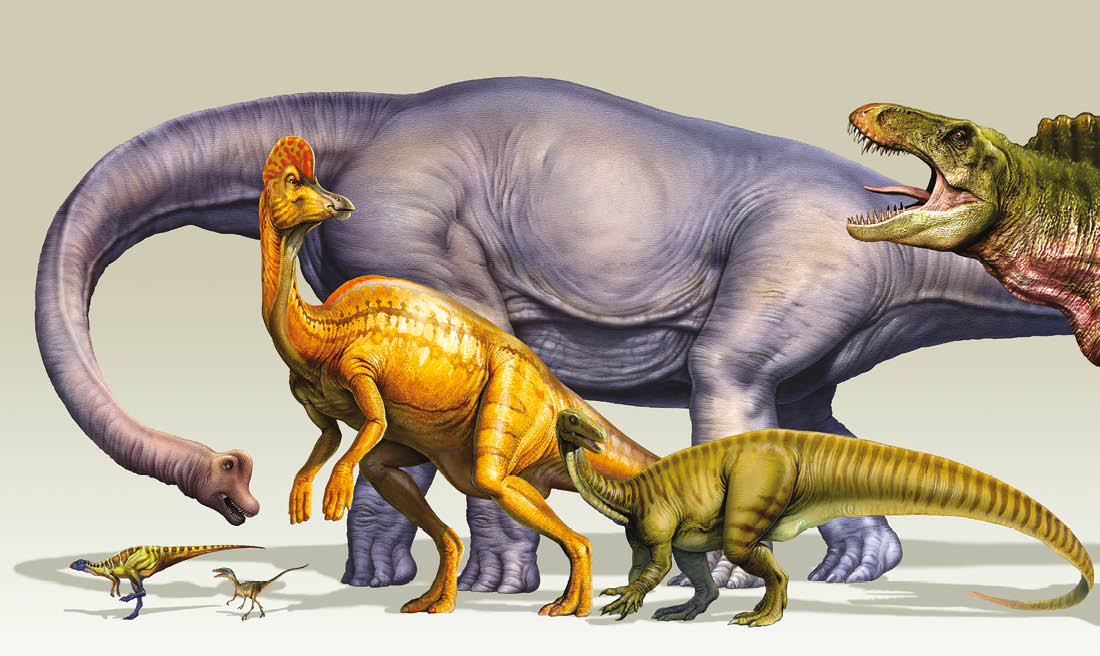 Did these animals ever meet? No, since each of them lived in a different time or region of the world. Riveting Reptiles Dinosaurs are widely considered the most fascinating animals. Amongst others they included enormous herbivores as well as tiny predators the size of a chicken egg. Nearly all were covered in scales, and their young hatched out of eggs a characteristic trait of reptiles. Dinosaurs walked on either two or four legs and were reptiles just like turtles, lizards, snakes and crocodiles.
Did these animals ever meet? No, since each of them lived in a different time or region of the world. Riveting Reptiles Dinosaurs are widely considered the most fascinating animals. Amongst others they included enormous herbivores as well as tiny predators the size of a chicken egg. Nearly all were covered in scales, and their young hatched out of eggs a characteristic trait of reptiles. Dinosaurs walked on either two or four legs and were reptiles just like turtles, lizards, snakes and crocodiles.  WHEN DINOSAURS RULED
WHEN DINOSAURS RULED 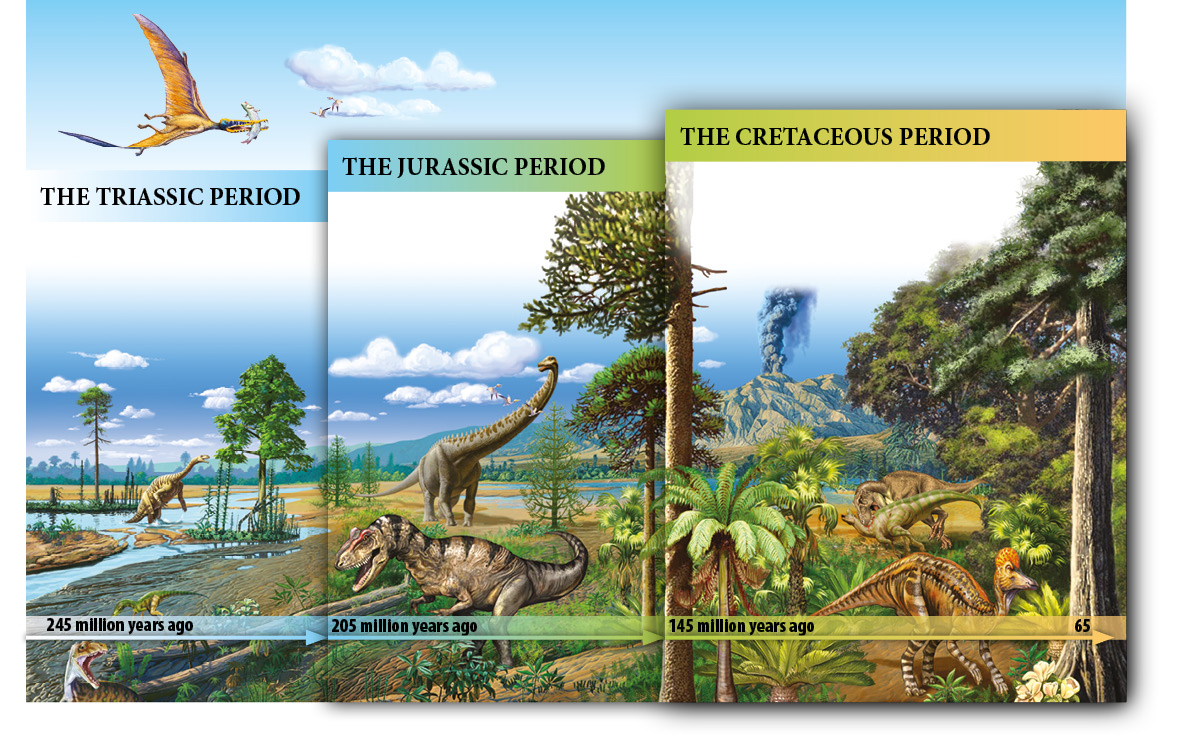 In the history of the Earth, the age of the dinosaurs is known as the Mesozoic era.
In the history of the Earth, the age of the dinosaurs is known as the Mesozoic era.  UNCOVERING THE PAST
UNCOVERING THE PAST 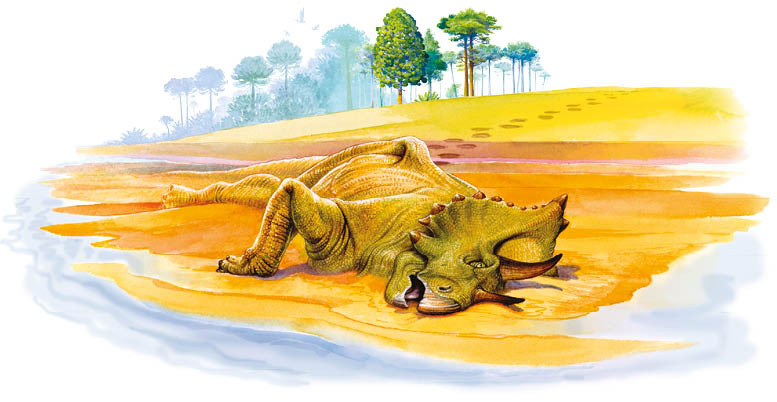 From bone to stone? Our primary source of knowledge about dinosaurs comes from the fossils that palaeontologists have unearthed on every continent around the world. The most common discoveries involve bones and teeth.
From bone to stone? Our primary source of knowledge about dinosaurs comes from the fossils that palaeontologists have unearthed on every continent around the world. The most common discoveries involve bones and teeth.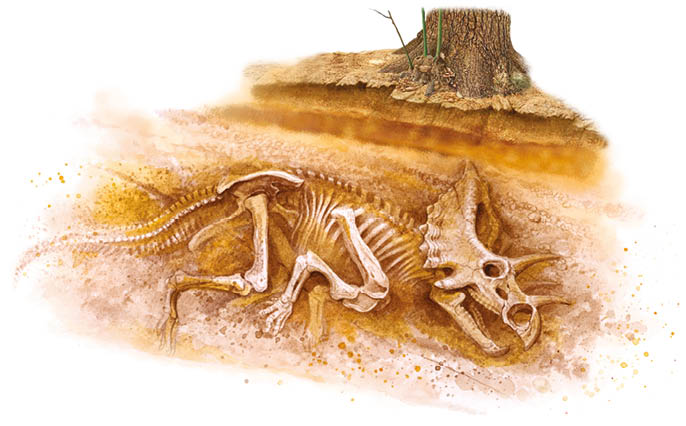 Bones, covered by layers of sediment and exposed to water and millions of years of chemical processes, are transformed into stone.
Bones, covered by layers of sediment and exposed to water and millions of years of chemical processes, are transformed into stone. 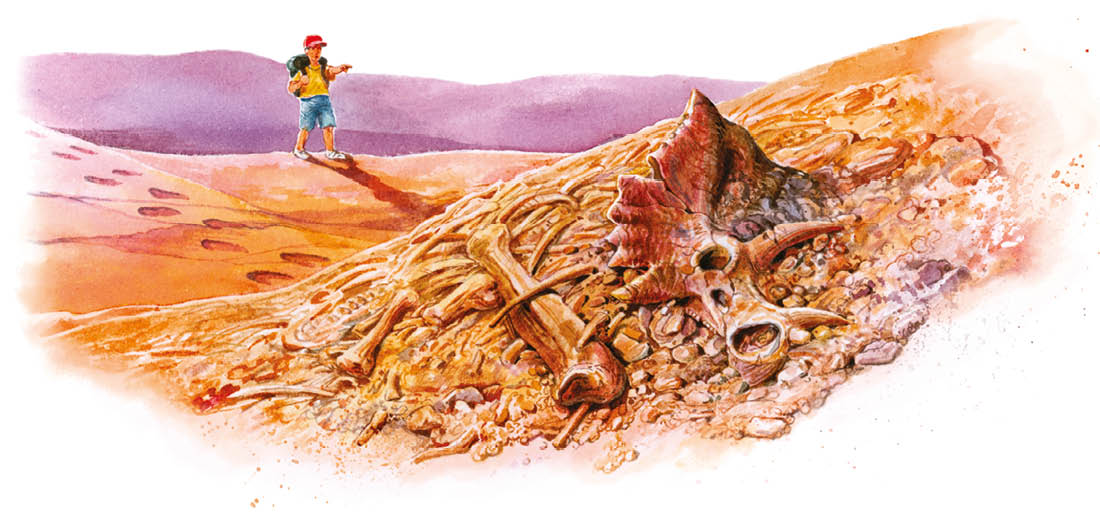 As rock erodes, fossils are uncovered, and the work of palaeontologists begins. Their challenge is to find out what animal the bones belonged to.
As rock erodes, fossils are uncovered, and the work of palaeontologists begins. Their challenge is to find out what animal the bones belonged to. 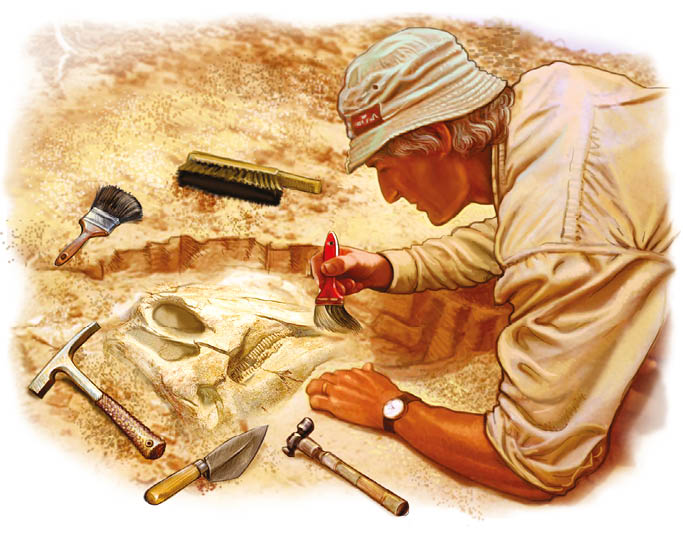 What does a palaeontologist do? Palaeontologists study prehistoric, extinct plants and animals.
What does a palaeontologist do? Palaeontologists study prehistoric, extinct plants and animals. 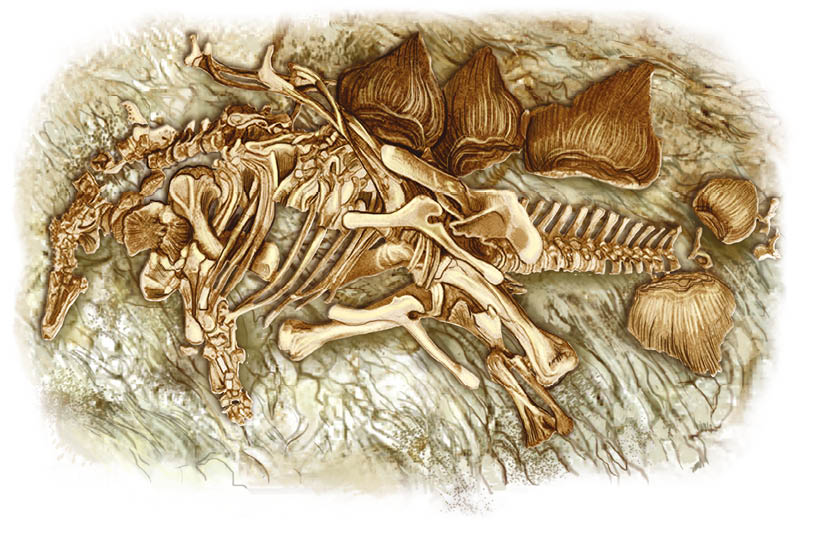 A fossilised Stegosaurus exposed after the removal of sediment layers.
A fossilised Stegosaurus exposed after the removal of sediment layers. 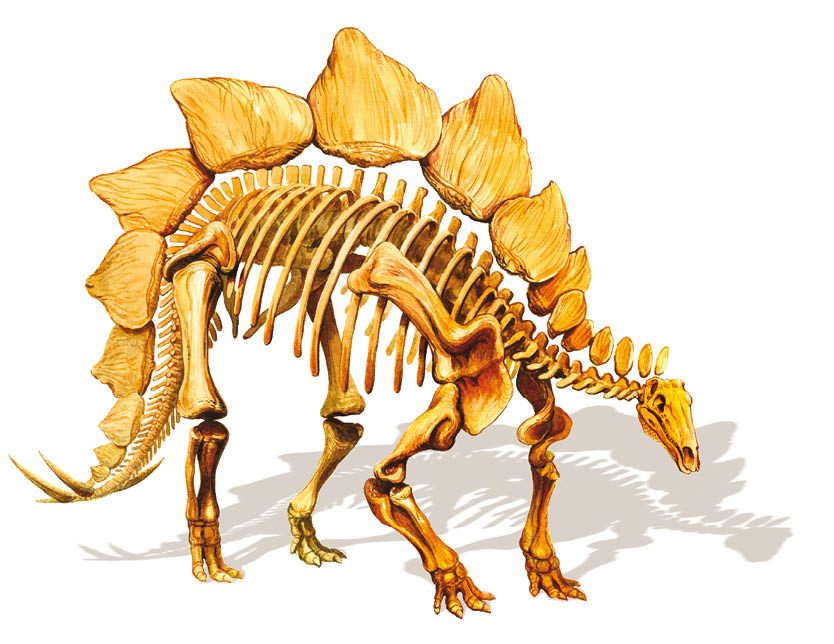 A reassembled skeleton with its ridge of bony plates.
A reassembled skeleton with its ridge of bony plates.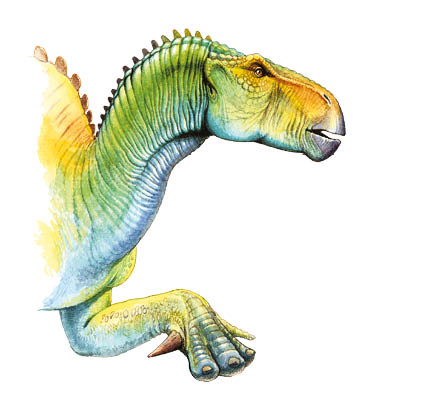 Nearly 200 years ago, it was believed that Iguanodon had a horn on its nose. Today we know that this spike was the dinosaurs thumb. Bone of contention A majority of the most popular dinosaurs were unearthed in North America. The first find was a Hadrosaurus also known as a duck-billed dinosaur.
Nearly 200 years ago, it was believed that Iguanodon had a horn on its nose. Today we know that this spike was the dinosaurs thumb. Bone of contention A majority of the most popular dinosaurs were unearthed in North America. The first find was a Hadrosaurus also known as a duck-billed dinosaur. 